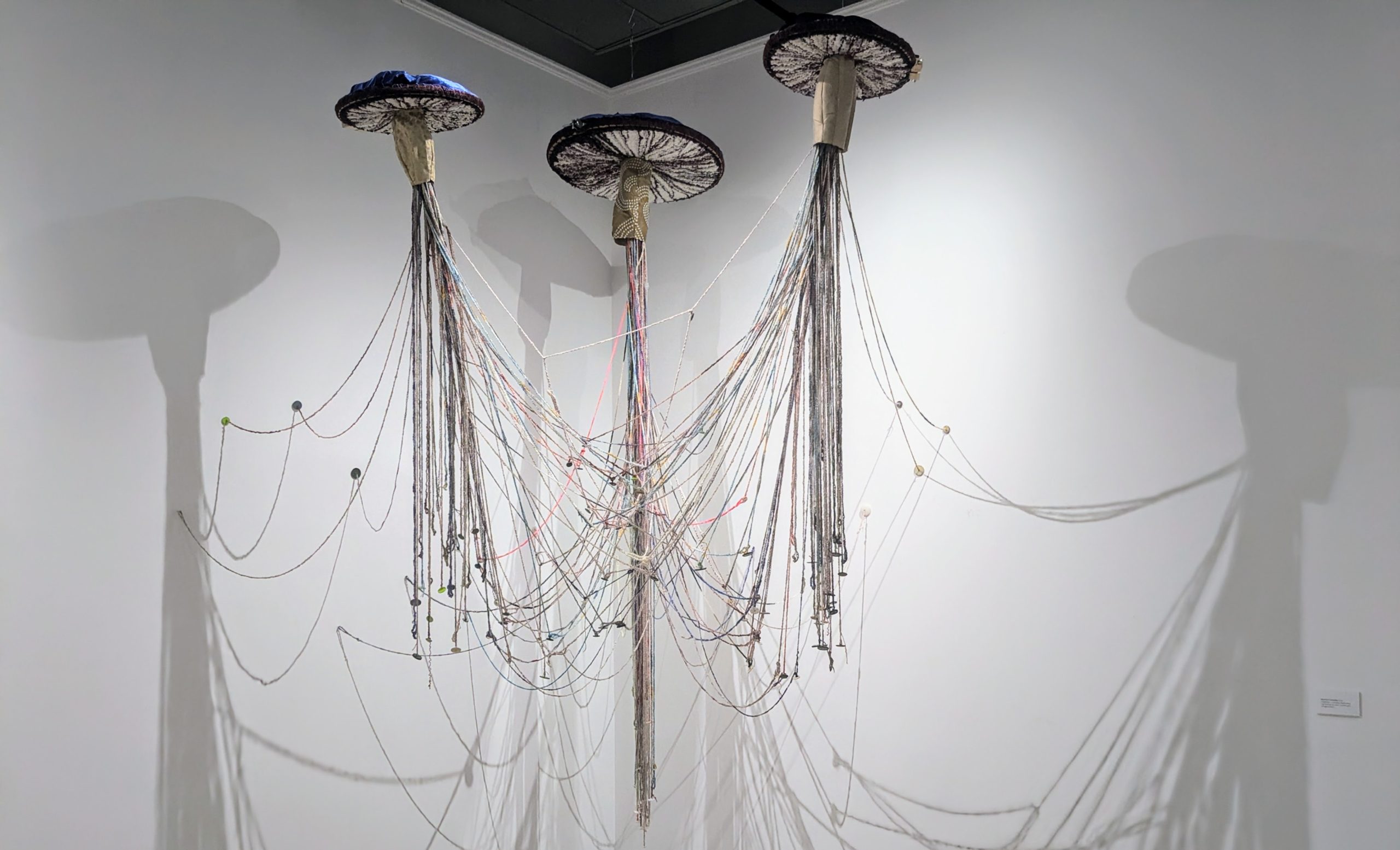Martina Munroe | The Liminal Space

Rug hooking is a traditional fiber art form that involves pulling loops of yarn or fabric through a woven base, usually burlap or linen. The loops are pulled through the base using a hook, creating a textured surface. This technique has been used for centuries to create functional and decorative pieces, from rugs to wall hangings.
Martina Munroe, a fiber artist, has captivated us with her innovative use of rug hooking to create intricate mycelium-themed artworks. Her work combines traditional techniques with contemporary themes, resulting in a unique fusion that celebrates both nature and craftsmanship. Munroe’s fascination with mycelium, the intricate root system of fungi, is evident in her detailed and immersive creations, including her series of three-dimensional mushrooms.
Munroe’s approach to rug hooking is both innovative and deeply rooted in tradition. She employs traditional techniques but introduces unconventional materials and themes to create contemporary and immersive artworks. Her choice of mycelium as a central theme is a testament to her ability to find beauty in the often-overlooked aspects of nature. Mycelium, the vegetative part of fungi, consists of a network of fine white filaments called hyphae. This intricate network not only plays a crucial role in the ecosystem but also serves as a powerful metaphor for interconnectedness and resilience.
For this exhibition, Munroe created a mycelium series which celebrates the hidden beauty and complexity of fungi. Her pieces are meticulously crafted, capturing the delicate structures and vibrant colours of mycelium. By focusing on this often-missed aspect of nature, Munroe invites viewers to appreciate the interconnectedness of life and the intricate systems that support it. One of the highlights of her mycelium series is the creation of three immersive mushrooms, these mushrooms are not only visually striking but also convey deeper meanings related to ecology and sustainability.
Munroe draws inspiration from the diverse world of mushrooms, capturing their intricate textures and vibrant colours in her art work. Her pieces often reflect the unique shapes and ecological significance of fungi, highlighting their role in nature’s delicate balance. As seen in the Amanita Muscaria, commonly known as the fly agaric, it is one of the most recognizable mushrooms with its bright red cap and white spots. In Munroe’s rendition, the Amanita Muscaria stands tall and vibrant, with intricate details capturing its iconic appearance. The mushroom is surrounded by a network of mycelium, emphasizing its connection to the forest floor. Munroe uses a combination of wool and silk threads to achieve the vivid colors and textures of the Amanita Muscaria. The cap is created using Sari silk ribbon that mimic the natural curvature and surface texture of the mushroom. The mycelium is represented by delicate silver and white threads, meticulously hooked and embroidered to create a lace-like network. The Amanita Muscaria piece symbolizes mystery and magic, reflecting the mushroom’s historical associations with folklore and shamanic rituals. It serves as a reminder of the deep cultural and ecological significance of fungi.
The mycelium creations through rug hooking are a testament to Munroe’s artistic vision and technical skill. By focusing on the intricate beauty of mycelium and fungi, she brings attention to the often-overlooked aspects of nature and their ecological significance. The mycelium series stands as a remarkable example of how fiber art can be both aesthetically pleasing and thought-provoking. Munroe’s work continues to inspire and engage audiences, encouraging a deeper appreciation for the natural world and the delicate systems that sustain it. As she continues to explore new themes and techniques, Munroe pushes the boundaries of what is possible with rug hooking and beyond.